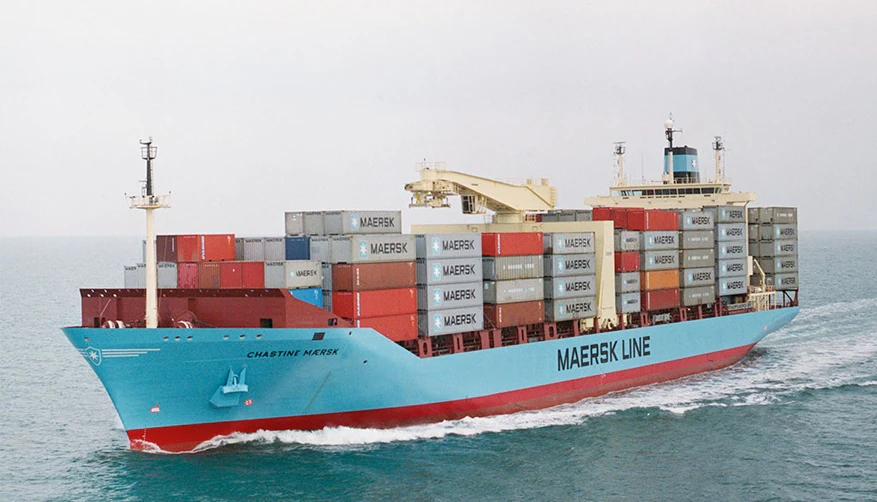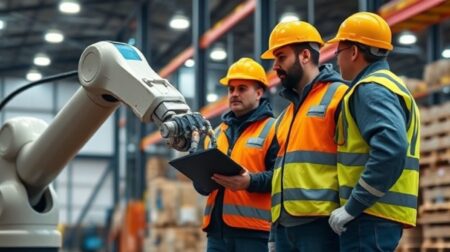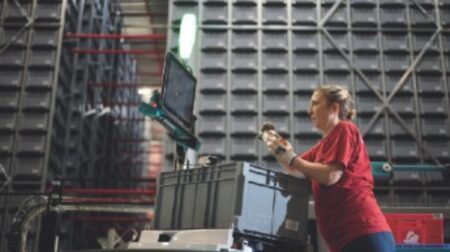James McLoughlin examines how new and ever-evolving artificial intelligence systems are revolutionising supply-chain operations…
In an era where efficiency, precision and adaptability are the cornerstones of modern business operations, the integration of artificial intelligence (AI) within the supply chain has emerged as a transformative force. As the global marketplace becomes increasingly interconnected and consumer demands continue to evolve, companies are turning to AI-driven solutions to navigate the complex web of logistics, optimise inventory management and enhance overall supply chain performance. We are seeing a number of groundbreaking applications of AI across various facets of the supply chain, from demand forecasting and route optimisation to inventory control and quality assurance. AI technologies are reshaping the supply chain landscape, revolutionising decision-making processes, reducing costs and ensuring unparalleled agility. As the supply chain ecosystem continues to evolve, it is important to explore how AI is propelling businesses toward a more responsive, efficient and competitive future.
Still not convinced of the power of AI? You might be interested to know that the above paragraph was written by ChatGPT…
Planning ahead
Now more than ever, it is important that decisions made in the supply chain are not simply reactive, but also predictive — and AI can help with this. The need for predictive analysis has been highlighted recently by the disruption to global supply chains due to the Covid-19 pandemic and geo-political conflict. According to a 2021 McKinsey & Co report, “successfully implementing AI-enabled supply chain management has enabled early adopters to improve logistics costs by 15%, inventory levels by 35%, and service levels by 65%, compared with slower-moving competitors”.
Smart technology can be used to predict future demand and empower decision-makers to make informed decisions based on relevant data. Stuart Hubbard, senior director of artificial intelligence and advanced development at Zebra Technologies, explains: “Today, AI low/no code platforms are being used for demand forecasting, taking retailer and CPG data such as customer loyalty programmes and in-store and online sales behaviours, and external data including weather, major events and traffic, to predict trends in demand for inventory. Zebra’s Warehouse Vision Study says that 91% of surveyed decision-makers plan to implement predictive analytics by 2027.”

Plenty more efficiency
The warehouse is one place in which AI can deliver serious efficiency improvements. Most warehouses and distribution centres rely heavily on repetitive action, whether carried out by a human worker or some form of robot. Using AI, data on movement within a facility can be used to map the optimal routes for a robot or member of staff to take when carrying out their tasks, saving valuable time and leading to significant efficiency gains.
AI technology for route optimisation can be useful both in and out of the warehouse. On the roads, ensuring that the route being taken by a delivery driver is the quickest and most efficient can lead to time and cost savings, as well as a reduction in emissions, which is critical if companies are to meet sustainability targets. Ansgar Thiede, vice president of data science at Körber Supply Chain Software, acknowledges this, adding: “AI-powered supply-chain solutions have the power to drive sustainable practices in the broader supply chain network as well.”
Thiede emphasises that AI should be used in conjunction with other technology throughout the whole supply chain for maximum results. He continues: “For an end-to-end technology provider like Körber, the various systems used in and outside the warehouse are never considered separate entities. Instead, think of all the technology – automation, robotics, warehouse management, voice, warehouse control, and labour management – as one integrated entity that serves a single purpose: to run the holistic warehouse at maximum efficiency.” A holistic approach to operations allows decision-makers to focus on what exactly they want to achieve and what needs to be done to achieve it.
You twin some, you lose some
Digital twins can offer huge benefits to companies, as Dee Cusack, executive vice president of global products and solutions at Dematic, identifies. “A truly holistic digital twin, crafted with the right level of detail, empowers decision-makers with insights beyond just equipment uptime”, Cusack says. She continues: “It facilitates more precise resource planning, inventory management, and supplier management, contributing to an overall supply chain that’s not only efficient but also resilient and resistant to disruption. In essence, the digital twin concept integrates multiple facets of the supply chain, providing a multifaceted solution rather than just focusing on predictive maintenance.”

Amin Sikander, co-founder and president of Synkrato, adds: “The main benefit of using a digital twin is being able to detect patterns and to test unlimited scenarios without disrupting operations – to find the best solution in minutes. In the warehouse, digital twin technology has the potential to reshape how work is performed. It can help to reduce travel times, quickly prepare orders, test and validate facility layouts, optimise storage and change how each task is being executed.” He goes on to say, however, that many digital twins are static and not particularly user-friendly, presenting some challenges. “The greatest digital twin value,” Sikander says, “comes from a living digital twin that is continually ingesting data so that it always represents its physical counterpart.” A digital twin that has access to real-time data will always have an advantage over one that doesn’t.
The past 12 months have seen some big names across several different sectors begin to implement digital-twin technology to improve processes across the supply chain. In October 2022, confectionary company Mars partnered with digital, cloud and security services firm Accenture to develop an AI-based digital factory. More recently, FedEx Innovation Lab (FIL), which funds start-ups in India, announced an investment in AI and related digital technologies to improve data insights into its supply chain.
I, chatbot
Chatbots have become increasingly intelligent and, as the software has improved, they have become sufficiently advanced to assist with customer service responsibilities. Although not yet at a point where they can replace humans fully, chatbots can be incredibly useful for handling requests, offering advice or connecting a customer to the right person to handle their query. As Körber’s Thiede explains: “AI technology can help in triaging customer requests and searching for answers to customer requests, utilising historical data. This would help reduce response times and find appropriate solutions quicker.” He is quick to point out, however, that “customer service will always require some human oversight to ensure that the customer requests are resolved with the required level of accuracy”.
Zebra’s Hubbard concurs. He sees the value of this kind of technology to the supply chain, explaining: “AI chat software has come to the forefront in the past year with the likes of ChatGPT creating generative AI using large language models trained on deep learning focused on natural language processing. Use cases are still emerging, but we can expect generative AI to unlock new types of personalisation for customers, rapid, accurate information retrieval and intelligent suggestions and recommendations.” Like Thiede, he acknowledges that AI is not yet perfect, adding: “There are risks to be addressed generally, around data inputs and outputs, namely intellectual property, copyright, and data protection to name some. AI development must be guided by responsible and ethical principles, including accountability and transparency.”
AI remains a relatively new tool at the disposal of logistics managers and its applications, as well its capabilities, seem set to grow rapidly in the coming years. If applied correctly with sufficient thought and planning, those harnessing its power are likely to see significant results when it comes to efficiency, productivity and even stability.
So what does the future hold for AI in the supply chain? If you want the answer straight from the horse’s mouth, so to speak, here is what ChatGPT has to say: “The future of AI in the supply chain promises to be transformative, with several key trends and developments likely to shape its evolution. It’s important to note that as AI continues to advance, there will be challenges related to data privacy, security and ethics that need to be addressed. Additionally, the specific trajectory of AI in the supply chain will depend on technological advancements, regulatory changes, and industry adoption rates.” Seems about right…
This feature was originally published in print in the November 2023 issue of Robotics & Automation.








